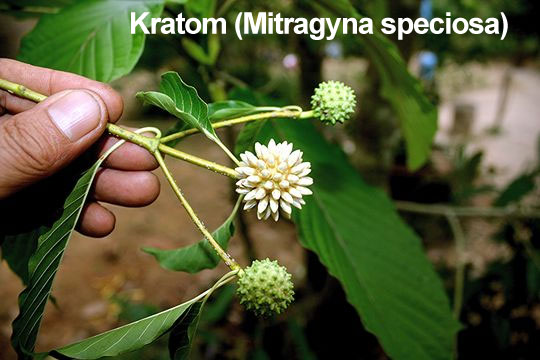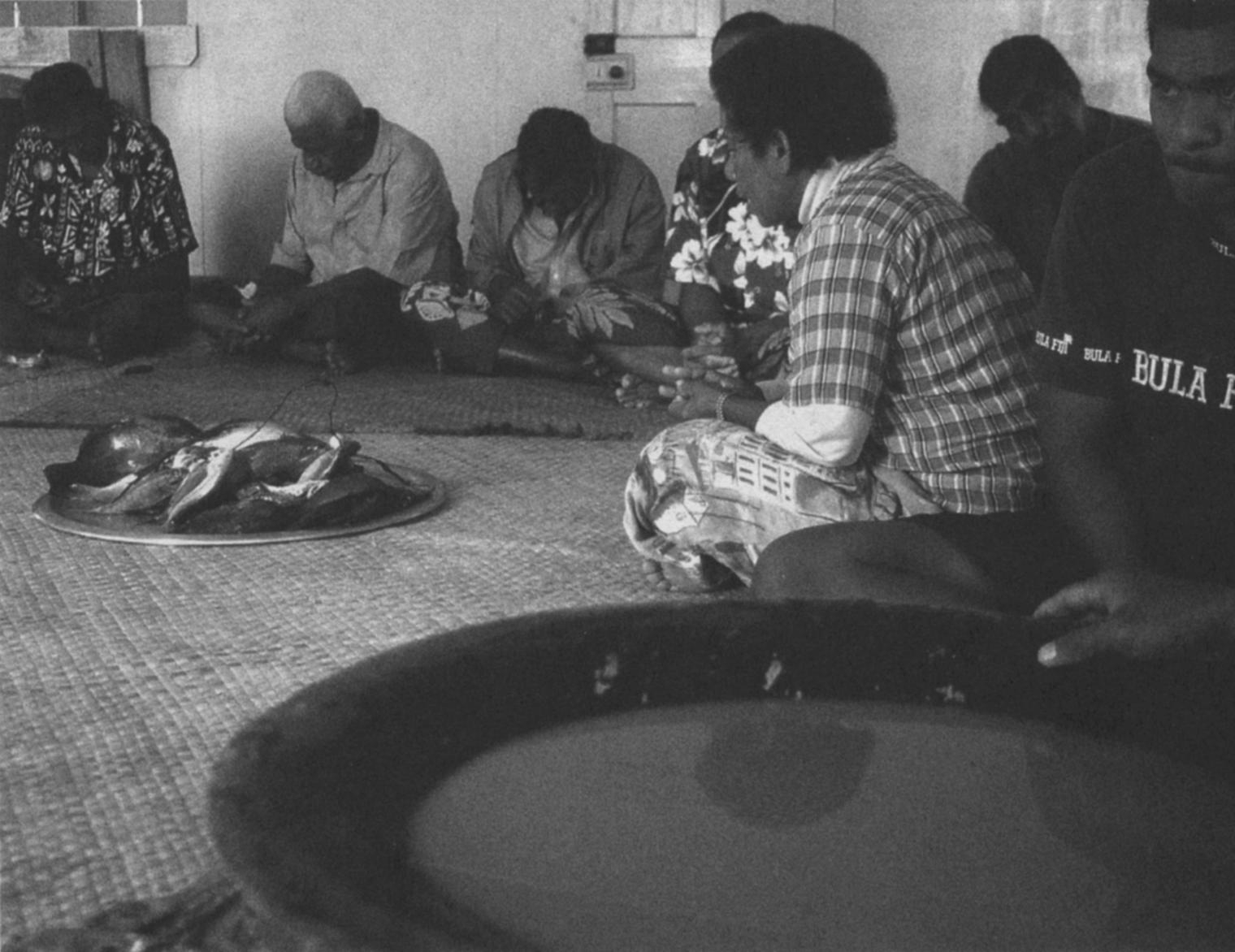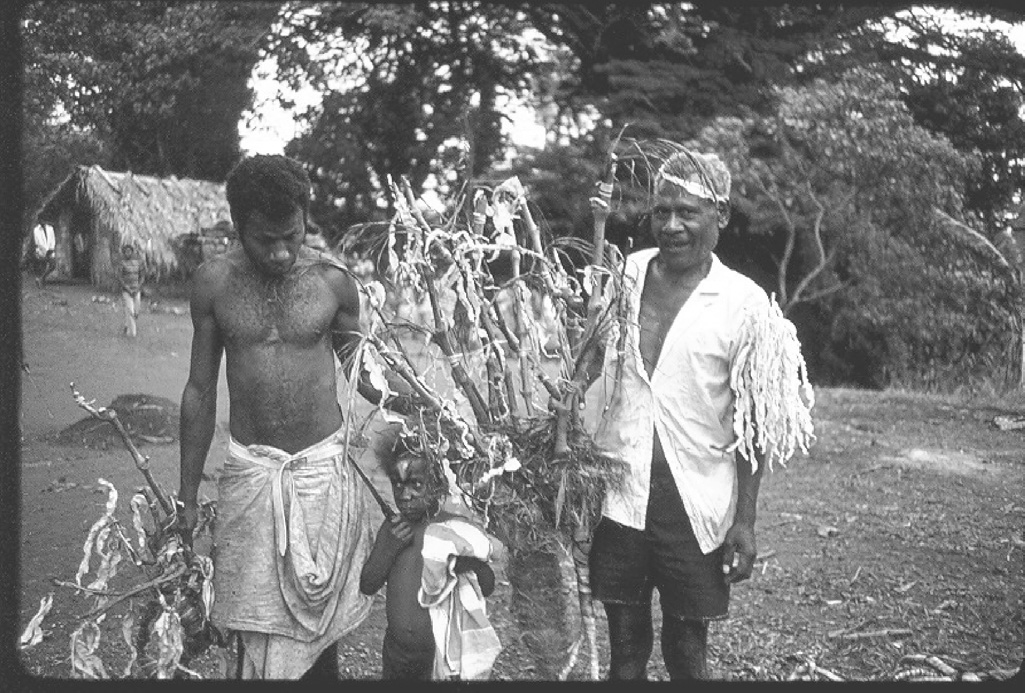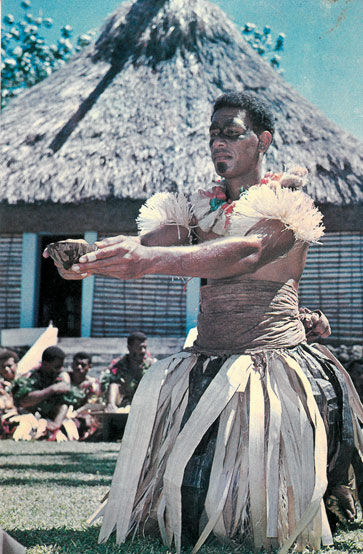Kava - Piper Methysticum / K@ - Mitragyna Speciosa
Authors: Jimmy Price (Kapmcrunk/JP1021) & Douglas LaRose (The Kavasseur/Kojo Douglas)
(Note: To the kava lovers on kavaforums this is essentially a refresher, as you likely have been aware of our stance for a long time)
Why we strive to create a very real separation between the two plants.
Why K@ discussions on platforms strictly dedicated to kava are not allowed, and what has caused this.

(Source: Cox, Paul Alan, and Lisa O’Rourke. 1987. “Kava (Piper Methysticum, Piperaceae).” Economic Botany 41 (3): 452–54. http://www.jstor.org/stable/4254999)

(Source: Mitragyna speciosa (Korth.) Havil. EOL. (n.d.). https://eol.org/media/6705600)
We would like to first and foremost make it 100% clear that we have no problem with those that choose to imbibe K@. It absolutely can be a lifesaver when walking through the fire that is active addiction. Be that as it may, it has its own following, platforms and researchers. It also has its own downfalls, issues, and political turmoil, and we wish to keep this separate from that of kava. This will not be a “kava vs K@” piece in terms of effects. A common question is “why not just support them all?”. Well, because, once again, K@ has no relation to kava. While some people like to place them in the same basket in terms of the risks of being scheduled via legislation, this is not the case, and hasn’t been for quite some time. Kava right now (as of August 2021) is currently in the last stages of discussion and labeling with the FDA in regards to the codex definition of kava. This means that in the very near future noble kava powder will likely be seen as a food item instead of a dietary supplement. This is in very bleak contrast to that of K@’s political position where it seems the WHO is looking at scheduling it at a world level and K@ is not considered an accepted dietary supplement by the FDA. Where kava is actively sought for inclusion, K@ is being currently pursued for exclusion.
We would also like to preface this by saying we have no desire to debate the safety and efficacy of M. Speciosa. A google scholar search for “Mitragyna Speciosa” can answer any questions related to that. The topic we want to address is the waning understanding that kava and K@ were never related, and have never had anything to do with each other historically or culturally.
Kava made its way to the mainstream US psyche by means of being promoted as a “legal high” in the late 90s early 2000s. It was during this time that vendors began carrying both K@ and kava together to serve the online legal high demand. These plants drew the attention of herbal distributors due to the fact that they both have an immediate effect. This is in contrast to the adaptogens and herbal remedies that require weeks of consumption to see an effect [1].
This is all that connects these two plants; a shared past in the legal high gray area, and nothing more. Kava has a rich traditional and ceremonial history and has been consumed in the United States for 121 years with the induction of Hawaii as an incorporated territory of the US [2], not to mention for over 2500 years in the south Pacific [3]. K@ does not have a traditional cultural following, is not ceremonial, and has not been consumed or grown in America for any great time scale. Online K@ sales for opioid withdrawal only begin to appear in scientific literature circa 2007 [4], however it has been seen for sale as early as 2003 (Personal obs.). K@, historically, has been used in the local context for its medicinal properties - treatment of pain, diarrhoea, cough, stimulant drug for enhancing work efficiency, aphrodisiac, and as a substitute for illicit substances mainly opioids [5-8]. The mixture of the two plants is purely an American invention.
We’ve found it necessary to message vendors in the past when claims such as “Kava root is what is commonly referred to as kava, while supplements from the leaves are known as K@.” appeared on commercial websites [9], so we hope you can understand our cumulative frustration. There is a great deal of ignorance regarding these two plants, and they can be mixed up very quickly.
We don’t allow the discussion of K@ because the intertwining of these two plants runs so deeply that we don’t wish to add any more to this misunderstanding. We also do this because we fully respect kava. Kava needs no sister plant, and no mixer other than water. Kava stands on its own and has for millenia. When we say “no K@ discussion” it is not to add negativity to K@, it’s to add positivity and respect to kava. Remember, kava, nor real kava culture ever naturally gravitated towards K@ to be paired with it. It is not a natural combination.
Kava culture spans thousands of years and thousands of miles. Weddings, funerals, celebrations, state gatherings, welcoming important guests, coming of age, and other life-events are marked in many Pacific countries by kava drinking ceremonies [10-12]. As such, kava is a key item in the lives of these people.

(Source: J, Webber artist on James Cook’s third voyage to the Pacific)

(Source: Tomlinson, Matt. 2007. “Everything and Its Opposite: Kava Drinking in Fiji.” Anthropological Quarterly 80 (4): 1065–81. http://www.jstor.org/stable/30052773)

(Source: Tomlinson, Matt. 2007. “Everything and Its Opposite: Kava Drinking in Fiji.” Anthropological Quarterly 80 (4): 1065–81. http://www.jstor.org/stable/30052773)

(Source: Lindstrom, Lamont. 2009. “Kava Pirates in Vanuatu?” International Journal of Cultural Property 16 (03): 291–308. https://doi.org/10.1017/S0940739109990208)

(Source: Aporosa, S. Apo. 2019. “Kava and Ethno-Cultural Identity in Oceania.” In The Palgrave Handbook of Ethnicity, edited by Steven Ratuva, 1–15. Singapore: Springer Singapore. https://doi.org/10.1007/978-981-13-0242-8_134-1)
If one were to ask a kava researcher, farmer or exporter about K@, they would likely only elicit a bewildered look. Kava is at the center of their everyday lives, and has been for centuries and millennia. Kava is as common and as known to these people as milk is to those of us in the United States.
The connection between the two plants is now being perpetuated by kava bars and online vendors which sell K@ and kava with little to no concern of the history, culture, and importance of kava. Essentially a good number (not all) of these bars have become K@ bars which occasionally serve kava. The postulated reasoning behind this has been stated that kava itself cannot support the business model and K@ is used to bolster sales. Unlike kavalactones, K@ constituents act as agonists of the mu opioid receptors and thus have an enhanced addictive potential. This is not arguable. It has been observed by many peer-reviewed research studies regarding mitragynine and its 7-hydrox form [13-19]. Additionally, it can be sold at much higher margins than kava at kava bars and headshops. These margins and guaranteed repeat customers make it an almost irresistible business proposition to small companies. As of 2020 the Botanical Educational Alliance estimated the K@ industry in the US to be worth up to $5 billion [4]. Alas, some kava focused businesses do resist the practice on ethical and cultural grounds. Kava bars such as Melo Melo Kava Bar , Bula Kava House, and Modernesian Kava Social specifically are kava only and maintain respect in regards to the image of kava, and also continue to grow in size and popularity, despite not vending K@.
We can now see that kava has its own cultural following in the Pacific Nations and abroad. Diaspora has spread kava consumption across the south pacific and recently into America [20]. Kava, with all of its cultural, ceremonial and traditional usage, must be protected and separated from other substances. We cannot stand silently as kava is usurped by other herbal concoctions. It is our position that kava deserves to stand alone without misrepresentation, hence our rules regarding other substance discussion including K@.
Kava is special. Kava is “more-than-plant”. It wouldn’t exist if not for the exacting efforts of kava farmers eons ago searching for the perfect effect profile, and taste. Kava also requires at least 3-4 years of attention to cultivate.
Kava is man-made. Kava cannot continue to propagate without the intervention of humans. It doesn’t grow wild, and can be very temperamental in regards to climate and pests.
Kava is a regional specialty. The cultivation of wild kava (P. wichmanii) into domesticated kava (P. Methysticum) is solely in the hands of the Pacific Islanders. They alone have brought to us what we know as “Kava” today.
Kava BELONGS to the South Pacific [21].
It is because of these properties we feel that kava and kava alone is important enough to dedicate entire platforms unto. R/kava, kavaforums.com, The Kavasseur’s Kava Lounge Group, and the Pacifica Kava Forums Group on Facebook are all dedicated to this plant in this context. There is too much culture, science, and tradition behind kava to let any other plant, drug or supplement muddy its complete picture.
[1] Langade, Deepak, Subodh Kanchi, Jaising Salve, Khokan Debnath, and Dhruv Ambegaokar. 2019. “Efficacy and Safety of Ashwagandha (Withania Somnifera) Root Extract in Insomnia and Anxiety: A Double-Blind, Randomized, Placebo-Controlled Study.” Cureus 11 (9): e5797. https://doi.org/10.7759/cureus.5797
[2] Wikimedia Foundation. (2021, July 31). Territory of Hawaii. Wikipedia. https://en.wikipedia.org/wiki/Territory_of_Hawaii
[3] Clough, A. R. 2004. “Kava.” Reference Book for the CARPA Standard Treatment Manual, 4th Edition. Darwin: Central Australian Rural Practitioners Association. http://iempowerment.org/usb/iempowerment/healthcare/Mental_health_and_drug_problems/Kava.pdf
[4] Williams, Rebecca S., and Dmitriy Nikitin. 2020. “The Internet Market for K@, an Opioid Alternative and Variably Legal Recreational Drug.” The International Journal on Drug Policy 78 (April): 102715. https://doi.org/10.1016/j.drugpo.2020.102715
[5] Vicknasingam, Balasingam, Suresh Narayanan, Goh Teik Beng, and Sharif Mahsufi Mansor. 2010. “The Informal Use of Ketum (Mitragyna Speciosa) for Opioid Withdrawal in the Northern States of Peninsular Malaysia and Implications for Drug Substitution Therapy.” The International Journal on Drug Policy 21 (4): 283–88. https://doi.org/10.1016/j.drugpo.2009.12.003
[6] Saingam, Darika, Sawitri Assanangkornchai, Alan F. Geater, and Quantar Balthip. 2013. “Pattern and Consequences of Krathom (Mitragyna Speciosa Korth.) Use among Male Villagers in Southern Thailand: A Qualitative Study.” The International Journal on Drug Policy 24 (4): 351–58. https://doi.org/10.1016/j.drugpo.2012.09.004
[7] Tanguay, Pascal. 2011. “K@ in Thailand Decriminalisation and Community Control?” Transnational Institute, April. https://www.tni.org/files/download/[email protected]
[8] Saref, Azlin, Sharifah Suraya, Darshan Singh, Oliver Grundmann, Suresh Narayanan, Marc T. Swogger, Walter C. Prozialeck, Edward Boyer, Nelson Jeng Yeou Chear, and Vicknasingam Balasingam. 2019. “Self-Reported Prevalence and Severity of Opioid and K@ (Mitragyna Speciosa Korth.) Side Effects.” Journal of Ethnopharmacology 238 (June): 111876. https://doi.org/10.1016/j.jep.2019.111876
[9] Kava extract (using alcohol?). Kava Forums. (2019, December 2). https://kavaforums.com/forum/threads/kava-extract-using-alcohol.16351
[10] Turner, James W. 1986. “‘The Water of Life’: Kava Ritual and the Logic of Sacrifice.” Ethnology 25 (3): 203–14. https://doi.org/10.2307/3773584
[11] Ofanoa, Malakai, Stephen Buetow, Samuela Ofanoa, Peter Huggard, Janine Paynter, and Vili Nosa. 2020. “Reasons for and Impacts of Kava Use by Tongan Men in Kava Clubs in Auckland and Tonga.” Social Sciences 9 (2): 56–60. https://pdfs.semanticscholar.org/17e2/4e08a5f53d273c78660f5181125db790e8ab.pdf
[12] Maneze, Della, Anau Speizer, Noeline Dalton, and Sarah Dennis. 2008. “A Descriptive Study of Kava Use among Tongan Men in Macarthur, Sydney South West.” Australian and New Zealand Journal of Public Health 32 (4): 314–16. https://doi.org/10.1111/j.1753-6405.2008.00246.x
[13] Anand, Akhil, and Avinash Hosanagar. 2021. “The Addictive Potential and Challenges With Use of the ‘Herbal Supplement’ K@: A Case Report and Literature Review.” Pain Medicine , April. https://doi.org/10.1093/pm/pnab126
[14] Chear, Nelson Jeng-Yeou, Francisco León, Abhisheak Sharma, Siva Rama Raju Kanumuri, Grant Zwolinski, Khalil A. Abboud, Darshan Singh, et al. 2021. “Exploring the Chemistry of Alkaloids from Malaysian Mitragyna Speciosa (K@) and the Role of Oxindoles on Human Opioid Receptors.” Journal of Natural Products 84 (4): 1034–43. https://doi.org/10.1021/acs.jnatprod.0c01055
[15] Grundmann, Oliver, Jane K. Babin, Jack E. Henningfield, Albert Garcia-Romeu, Andrew C. Kruegel, Walter C. Prozialeck, Robert B. Raffa, Darshan Singh, and Kirsten E. Smith. 2021. “K@ Use in the United States: A Diverse and Complex Profile.” Addiction . Wiley. https://doi.org/10.1111/add.15173
[16] Gutridge, Anna M., Meridith T. Robins, Robert J. Cassell, Rajendra Uprety, Kendall L. Mores, Mee Jung Ko, Gavril W. Pasternak, Susruta Majumdar, and Richard M. van Rijn. 2020. “G Protein-Biased K@-Alkaloids and Synthetic Carfentanil-Amide Opioids as Potential Treatments for Alcohol Use Disorder.” British Journal of Pharmacology 177 (7): 1497–1513. https://doi.org/10.1111/bph.14913
[17] Sharma, Abhisheak, and Christopher R. McCurdy. 2021. “Assessing the Therapeutic Potential and Toxicity of Mitragyna Speciosa in Opioid Use Disorder.” Expert Opinion on Drug Metabolism & Toxicology 17 (3): 255–57. https://doi.org/10.1080/17425255.2021.1853706
[18] Vento, Alessandro E., Simone de Persis, Sergio De Filippis, Fabrizio Schifano, Flavia Napoletano, John M. Corkery, and Georgios D. Kotzalidis. 2021. “Case Report: Treatment of K@ Use Disorder With a Classical Tricyclic Antidepressant.” Frontiers in Psychiatry / Frontiers Research Foundation 12 (March): 640218. https://doi.org/10.3389/fpsyt.2021.640218
[19] Zhou, Yuchen, Steven Ramsey, Davide Provasi, Amal El Daibani, Kevin Appourchaux, Soumen Chakraborty, Abhijeet Kapoor, Tao Che, Susruta Majumdar, and Marta Filizola. 2021. “Predicted Mode of Binding to and Allosteric Modulation of the μ-Opioid Receptor by K@’s Alkaloids with Reported Antinociception In Vivo.” Biochemistry 60 (18): 1420–29. https://doi.org/10.1021/acs.biochem.0c00658.
[20] ’Apo' Aporosa, S. 2015. “The New Kava User: Diasporic Identity Formation in Reverse.” New Zealand Sociology 30 (4): 58–77. https://researchcommons.waikato.ac.nz/handle/10289/12796
[21] Robinson, Daniel, Margaret Raven, Elizabeth Makin, Donna Kalfatak, Francis Hickey, and Trinison Tari. 2021. “Legal Geographies of Kava, Kastom and Indigenous Knowledge: Next Steps under the Nagoya Protocol.” Geoforum; Journal of Physical, Human, and Regional Geosciences 118 (January): 169–79. https://doi.org/10.1016/j.geoforum.2020.11.001
Authors: Jimmy Price (Kapmcrunk/JP1021) & Douglas LaRose (The Kavasseur/Kojo Douglas)
(Note: To the kava lovers on kavaforums this is essentially a refresher, as you likely have been aware of our stance for a long time)
Why we strive to create a very real separation between the two plants.
Why K@ discussions on platforms strictly dedicated to kava are not allowed, and what has caused this.
(Source: Cox, Paul Alan, and Lisa O’Rourke. 1987. “Kava (Piper Methysticum, Piperaceae).” Economic Botany 41 (3): 452–54. http://www.jstor.org/stable/4254999)
(Source: Mitragyna speciosa (Korth.) Havil. EOL. (n.d.). https://eol.org/media/6705600)
We would like to first and foremost make it 100% clear that we have no problem with those that choose to imbibe K@. It absolutely can be a lifesaver when walking through the fire that is active addiction. Be that as it may, it has its own following, platforms and researchers. It also has its own downfalls, issues, and political turmoil, and we wish to keep this separate from that of kava. This will not be a “kava vs K@” piece in terms of effects. A common question is “why not just support them all?”. Well, because, once again, K@ has no relation to kava. While some people like to place them in the same basket in terms of the risks of being scheduled via legislation, this is not the case, and hasn’t been for quite some time. Kava right now (as of August 2021) is currently in the last stages of discussion and labeling with the FDA in regards to the codex definition of kava. This means that in the very near future noble kava powder will likely be seen as a food item instead of a dietary supplement. This is in very bleak contrast to that of K@’s political position where it seems the WHO is looking at scheduling it at a world level and K@ is not considered an accepted dietary supplement by the FDA. Where kava is actively sought for inclusion, K@ is being currently pursued for exclusion.
We would also like to preface this by saying we have no desire to debate the safety and efficacy of M. Speciosa. A google scholar search for “Mitragyna Speciosa” can answer any questions related to that. The topic we want to address is the waning understanding that kava and K@ were never related, and have never had anything to do with each other historically or culturally.
Kava made its way to the mainstream US psyche by means of being promoted as a “legal high” in the late 90s early 2000s. It was during this time that vendors began carrying both K@ and kava together to serve the online legal high demand. These plants drew the attention of herbal distributors due to the fact that they both have an immediate effect. This is in contrast to the adaptogens and herbal remedies that require weeks of consumption to see an effect [1].
This is all that connects these two plants; a shared past in the legal high gray area, and nothing more. Kava has a rich traditional and ceremonial history and has been consumed in the United States for 121 years with the induction of Hawaii as an incorporated territory of the US [2], not to mention for over 2500 years in the south Pacific [3]. K@ does not have a traditional cultural following, is not ceremonial, and has not been consumed or grown in America for any great time scale. Online K@ sales for opioid withdrawal only begin to appear in scientific literature circa 2007 [4], however it has been seen for sale as early as 2003 (Personal obs.). K@, historically, has been used in the local context for its medicinal properties - treatment of pain, diarrhoea, cough, stimulant drug for enhancing work efficiency, aphrodisiac, and as a substitute for illicit substances mainly opioids [5-8]. The mixture of the two plants is purely an American invention.
We’ve found it necessary to message vendors in the past when claims such as “Kava root is what is commonly referred to as kava, while supplements from the leaves are known as K@.” appeared on commercial websites [9], so we hope you can understand our cumulative frustration. There is a great deal of ignorance regarding these two plants, and they can be mixed up very quickly.
We don’t allow the discussion of K@ because the intertwining of these two plants runs so deeply that we don’t wish to add any more to this misunderstanding. We also do this because we fully respect kava. Kava needs no sister plant, and no mixer other than water. Kava stands on its own and has for millenia. When we say “no K@ discussion” it is not to add negativity to K@, it’s to add positivity and respect to kava. Remember, kava, nor real kava culture ever naturally gravitated towards K@ to be paired with it. It is not a natural combination.
Kava culture spans thousands of years and thousands of miles. Weddings, funerals, celebrations, state gatherings, welcoming important guests, coming of age, and other life-events are marked in many Pacific countries by kava drinking ceremonies [10-12]. As such, kava is a key item in the lives of these people.
(Source: J, Webber artist on James Cook’s third voyage to the Pacific)
(Source: Tomlinson, Matt. 2007. “Everything and Its Opposite: Kava Drinking in Fiji.” Anthropological Quarterly 80 (4): 1065–81. http://www.jstor.org/stable/30052773)
(Source: Tomlinson, Matt. 2007. “Everything and Its Opposite: Kava Drinking in Fiji.” Anthropological Quarterly 80 (4): 1065–81. http://www.jstor.org/stable/30052773)
(Source: Lindstrom, Lamont. 2009. “Kava Pirates in Vanuatu?” International Journal of Cultural Property 16 (03): 291–308. https://doi.org/10.1017/S0940739109990208)
(Source: Aporosa, S. Apo. 2019. “Kava and Ethno-Cultural Identity in Oceania.” In The Palgrave Handbook of Ethnicity, edited by Steven Ratuva, 1–15. Singapore: Springer Singapore. https://doi.org/10.1007/978-981-13-0242-8_134-1)
If one were to ask a kava researcher, farmer or exporter about K@, they would likely only elicit a bewildered look. Kava is at the center of their everyday lives, and has been for centuries and millennia. Kava is as common and as known to these people as milk is to those of us in the United States.
The connection between the two plants is now being perpetuated by kava bars and online vendors which sell K@ and kava with little to no concern of the history, culture, and importance of kava. Essentially a good number (not all) of these bars have become K@ bars which occasionally serve kava. The postulated reasoning behind this has been stated that kava itself cannot support the business model and K@ is used to bolster sales. Unlike kavalactones, K@ constituents act as agonists of the mu opioid receptors and thus have an enhanced addictive potential. This is not arguable. It has been observed by many peer-reviewed research studies regarding mitragynine and its 7-hydrox form [13-19]. Additionally, it can be sold at much higher margins than kava at kava bars and headshops. These margins and guaranteed repeat customers make it an almost irresistible business proposition to small companies. As of 2020 the Botanical Educational Alliance estimated the K@ industry in the US to be worth up to $5 billion [4]. Alas, some kava focused businesses do resist the practice on ethical and cultural grounds. Kava bars such as Melo Melo Kava Bar , Bula Kava House, and Modernesian Kava Social specifically are kava only and maintain respect in regards to the image of kava, and also continue to grow in size and popularity, despite not vending K@.
We can now see that kava has its own cultural following in the Pacific Nations and abroad. Diaspora has spread kava consumption across the south pacific and recently into America [20]. Kava, with all of its cultural, ceremonial and traditional usage, must be protected and separated from other substances. We cannot stand silently as kava is usurped by other herbal concoctions. It is our position that kava deserves to stand alone without misrepresentation, hence our rules regarding other substance discussion including K@.
Kava is special. Kava is “more-than-plant”. It wouldn’t exist if not for the exacting efforts of kava farmers eons ago searching for the perfect effect profile, and taste. Kava also requires at least 3-4 years of attention to cultivate.
Kava is man-made. Kava cannot continue to propagate without the intervention of humans. It doesn’t grow wild, and can be very temperamental in regards to climate and pests.
Kava is a regional specialty. The cultivation of wild kava (P. wichmanii) into domesticated kava (P. Methysticum) is solely in the hands of the Pacific Islanders. They alone have brought to us what we know as “Kava” today.
Kava BELONGS to the South Pacific [21].
It is because of these properties we feel that kava and kava alone is important enough to dedicate entire platforms unto. R/kava, kavaforums.com, The Kavasseur’s Kava Lounge Group, and the Pacifica Kava Forums Group on Facebook are all dedicated to this plant in this context. There is too much culture, science, and tradition behind kava to let any other plant, drug or supplement muddy its complete picture.
[1] Langade, Deepak, Subodh Kanchi, Jaising Salve, Khokan Debnath, and Dhruv Ambegaokar. 2019. “Efficacy and Safety of Ashwagandha (Withania Somnifera) Root Extract in Insomnia and Anxiety: A Double-Blind, Randomized, Placebo-Controlled Study.” Cureus 11 (9): e5797. https://doi.org/10.7759/cureus.5797
[2] Wikimedia Foundation. (2021, July 31). Territory of Hawaii. Wikipedia. https://en.wikipedia.org/wiki/Territory_of_Hawaii
[3] Clough, A. R. 2004. “Kava.” Reference Book for the CARPA Standard Treatment Manual, 4th Edition. Darwin: Central Australian Rural Practitioners Association. http://iempowerment.org/usb/iempowerment/healthcare/Mental_health_and_drug_problems/Kava.pdf
[4] Williams, Rebecca S., and Dmitriy Nikitin. 2020. “The Internet Market for K@, an Opioid Alternative and Variably Legal Recreational Drug.” The International Journal on Drug Policy 78 (April): 102715. https://doi.org/10.1016/j.drugpo.2020.102715
[5] Vicknasingam, Balasingam, Suresh Narayanan, Goh Teik Beng, and Sharif Mahsufi Mansor. 2010. “The Informal Use of Ketum (Mitragyna Speciosa) for Opioid Withdrawal in the Northern States of Peninsular Malaysia and Implications for Drug Substitution Therapy.” The International Journal on Drug Policy 21 (4): 283–88. https://doi.org/10.1016/j.drugpo.2009.12.003
[6] Saingam, Darika, Sawitri Assanangkornchai, Alan F. Geater, and Quantar Balthip. 2013. “Pattern and Consequences of Krathom (Mitragyna Speciosa Korth.) Use among Male Villagers in Southern Thailand: A Qualitative Study.” The International Journal on Drug Policy 24 (4): 351–58. https://doi.org/10.1016/j.drugpo.2012.09.004
[7] Tanguay, Pascal. 2011. “K@ in Thailand Decriminalisation and Community Control?” Transnational Institute, April. https://www.tni.org/files/download/[email protected]
[8] Saref, Azlin, Sharifah Suraya, Darshan Singh, Oliver Grundmann, Suresh Narayanan, Marc T. Swogger, Walter C. Prozialeck, Edward Boyer, Nelson Jeng Yeou Chear, and Vicknasingam Balasingam. 2019. “Self-Reported Prevalence and Severity of Opioid and K@ (Mitragyna Speciosa Korth.) Side Effects.” Journal of Ethnopharmacology 238 (June): 111876. https://doi.org/10.1016/j.jep.2019.111876
[9] Kava extract (using alcohol?). Kava Forums. (2019, December 2). https://kavaforums.com/forum/threads/kava-extract-using-alcohol.16351
[10] Turner, James W. 1986. “‘The Water of Life’: Kava Ritual and the Logic of Sacrifice.” Ethnology 25 (3): 203–14. https://doi.org/10.2307/3773584
[11] Ofanoa, Malakai, Stephen Buetow, Samuela Ofanoa, Peter Huggard, Janine Paynter, and Vili Nosa. 2020. “Reasons for and Impacts of Kava Use by Tongan Men in Kava Clubs in Auckland and Tonga.” Social Sciences 9 (2): 56–60. https://pdfs.semanticscholar.org/17e2/4e08a5f53d273c78660f5181125db790e8ab.pdf
[12] Maneze, Della, Anau Speizer, Noeline Dalton, and Sarah Dennis. 2008. “A Descriptive Study of Kava Use among Tongan Men in Macarthur, Sydney South West.” Australian and New Zealand Journal of Public Health 32 (4): 314–16. https://doi.org/10.1111/j.1753-6405.2008.00246.x
[13] Anand, Akhil, and Avinash Hosanagar. 2021. “The Addictive Potential and Challenges With Use of the ‘Herbal Supplement’ K@: A Case Report and Literature Review.” Pain Medicine , April. https://doi.org/10.1093/pm/pnab126
[14] Chear, Nelson Jeng-Yeou, Francisco León, Abhisheak Sharma, Siva Rama Raju Kanumuri, Grant Zwolinski, Khalil A. Abboud, Darshan Singh, et al. 2021. “Exploring the Chemistry of Alkaloids from Malaysian Mitragyna Speciosa (K@) and the Role of Oxindoles on Human Opioid Receptors.” Journal of Natural Products 84 (4): 1034–43. https://doi.org/10.1021/acs.jnatprod.0c01055
[15] Grundmann, Oliver, Jane K. Babin, Jack E. Henningfield, Albert Garcia-Romeu, Andrew C. Kruegel, Walter C. Prozialeck, Robert B. Raffa, Darshan Singh, and Kirsten E. Smith. 2021. “K@ Use in the United States: A Diverse and Complex Profile.” Addiction . Wiley. https://doi.org/10.1111/add.15173
[16] Gutridge, Anna M., Meridith T. Robins, Robert J. Cassell, Rajendra Uprety, Kendall L. Mores, Mee Jung Ko, Gavril W. Pasternak, Susruta Majumdar, and Richard M. van Rijn. 2020. “G Protein-Biased K@-Alkaloids and Synthetic Carfentanil-Amide Opioids as Potential Treatments for Alcohol Use Disorder.” British Journal of Pharmacology 177 (7): 1497–1513. https://doi.org/10.1111/bph.14913
[17] Sharma, Abhisheak, and Christopher R. McCurdy. 2021. “Assessing the Therapeutic Potential and Toxicity of Mitragyna Speciosa in Opioid Use Disorder.” Expert Opinion on Drug Metabolism & Toxicology 17 (3): 255–57. https://doi.org/10.1080/17425255.2021.1853706
[18] Vento, Alessandro E., Simone de Persis, Sergio De Filippis, Fabrizio Schifano, Flavia Napoletano, John M. Corkery, and Georgios D. Kotzalidis. 2021. “Case Report: Treatment of K@ Use Disorder With a Classical Tricyclic Antidepressant.” Frontiers in Psychiatry / Frontiers Research Foundation 12 (March): 640218. https://doi.org/10.3389/fpsyt.2021.640218
[19] Zhou, Yuchen, Steven Ramsey, Davide Provasi, Amal El Daibani, Kevin Appourchaux, Soumen Chakraborty, Abhijeet Kapoor, Tao Che, Susruta Majumdar, and Marta Filizola. 2021. “Predicted Mode of Binding to and Allosteric Modulation of the μ-Opioid Receptor by K@’s Alkaloids with Reported Antinociception In Vivo.” Biochemistry 60 (18): 1420–29. https://doi.org/10.1021/acs.biochem.0c00658.
[20] ’Apo' Aporosa, S. 2015. “The New Kava User: Diasporic Identity Formation in Reverse.” New Zealand Sociology 30 (4): 58–77. https://researchcommons.waikato.ac.nz/handle/10289/12796
[21] Robinson, Daniel, Margaret Raven, Elizabeth Makin, Donna Kalfatak, Francis Hickey, and Trinison Tari. 2021. “Legal Geographies of Kava, Kastom and Indigenous Knowledge: Next Steps under the Nagoya Protocol.” Geoforum; Journal of Physical, Human, and Regional Geosciences 118 (January): 169–79. https://doi.org/10.1016/j.geoforum.2020.11.001
Last edited:
